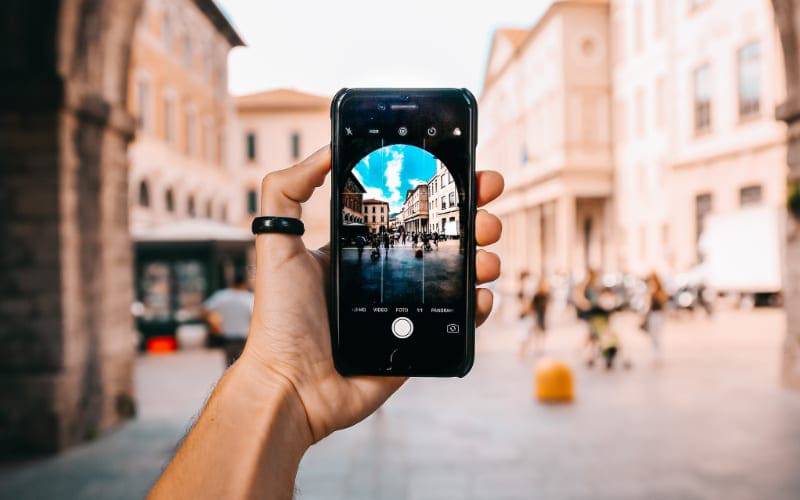Editing photos on an iPhone might appear daunting due to the abundance of options and settings, but it’s actually accessible to individuals of all skill levels. Thanks to its user-friendly interface and intuitive controls, you can effortlessly enhance your images using preset effects or manually tweak settings to achieve your desired visual outcome. No need for expensive editing software.
The iPhone’s photo editor also provides advanced features, including selective editing, allowing you to make precise adjustments to specific areas in your images. Furthermore, it’s a breeze to share your edited photos directly from the app, whether you want to post them on social media platforms or send them to friends and family.
How to Edit Photos on an iPhone
Most of the time, we snap pictures on the go, without giving much thought to composition or lighting. Our primary goal is to capture the moment swiftly. Fortunately, this is where post-editing comes into play. Similar to icing a cake, editing images adds that finishing touch, and editing photos on an iPhone may be even easier than dealing with gooey buttercream.
Crop, Rotate, or Flip Your Photo
If your selfie was photobombed or contains unwanted elements, the crop tool is your savior. Cropping is one of the simplest and quickest ways to eliminate distractions and improve a photo’s composition. To get started in Photos, tap on any thumbnail to view it in full screen, then select Edit, followed by the crop icon to choose from three cropping methods:
- Manual Crop: With the crop icon selected, drag the corners of the rectangle to enclose the area you want to keep, then tap Done to crop.
- Zoom Crop: Alternatively, activate the crop tool and pinch to zoom in. When the photo appears as you want it cropped, tap Done to save.
- Use a Preset Ratio: Tap the aspect ratio icon in the upper right corner, then select a cropping option like square, wallpaper, 9:16, or 5:4. Hit Done to save the change.
Pro tip: If you choose a ratio crop, such as 9:16, you can select a vertical or horizontal orientation by tapping the two rectangles below the image.
How to Rotate a Picture on iPhone
To rotate your photo in 90-degree increments, tap the rotate icon (a square with an arrow curving around one corner) and keep going until you achieve your desired orientation. Confirm the changes by tapping Done.
How to Flip a Photo on iPhone
Use the flip icon (mirrored triangles with an arrow above them) to horizontally reverse the image. Tap Done to save your edits. If you change your mind about the crops, rotations, or flips during the editing process, you can simply tap Cancel in the lower left corner of the screen and choose to Discard Changes.
Straighten Your Image and Adjust Perspective
Sometimes, you might not notice skewed or tilted lines in a photo until after taking it. Fortunately, rectifying the perspective is straightforward with the iPhone’s editing software. Open your photo, tap Edit, and select the crop icon.
Under the photo, you’ll find three options for straightening horizontal lines and adjusting vertical and horizontal perspectives. After selecting the desired option, drag the slider to make precise changes. There’s also an Auto option at the top for automatic adjustments based on the chosen setting:
- Straighten: Corrects horizontal line deviations in the photo.
- Vertical Perspective: Modifies the perceived height or angle of objects in the photo.
- Horizontal Perspective: Adjusts horizontal lines and angles in the photo.
Once you’re done editing the perspective, hit Done to save your changes or, if unsatisfied, go for Cancel and then Discard Changes.
Adjust Light and Color
Light and color significantly impact an image’s mood and visual appeal, whether you’re editing photos on an iPhone or any other platform. Proper lighting brings out subject features, adds depth, and highlights important details. Similarly, altering a photo’s colors can evoke emotions, set moods, or convey messages. The Photos app on your iPhone offers various tools to adjust light and color in your pictures.
To get started, open the photo you wish to modify, tap Edit, and swipe left below the image to access the available editing options. The quickest and easiest method is to tap on Auto, and the slider under the Auto tab allows you to adjust the intensity of the iPhone’s suggested edit.
For those who seek complete control over their edits, the iPhone photo editor offers the flexibility to individually adjust a range of effects to create a customized edit. These are the effects you can modify:
- Exposure: Increasing it brightens the image, while decreasing it adds a darker and more dramatic touch.
- Brilliance: Enhances clarity and vibrancy, making the image visually striking.
- Highlights: Accentuates the brightest areas, adding brightness and contrast.
- Shadows: Darkens the darker areas, creating depth.
- Contrast: Amplifies the difference between light and dark.
- Brightness: Alters the overall lightness or darkness of the photo, though less dramatically than exposure.
- Blackpoint: Adjusts the darkest point, offering greater control over the tonal range.
- Saturation: Influences color intensity and richness.
- Vibrance: Similar to saturation but in a subtler and more natural way.
- Warmth: Adjusts color temperature, making it warmer (yellow/orange) or cooler (blue).
- Tint: Tweaks the overall color balance, adding a subtle hue.
- Sharpness: Enhances clarity and detail, defining edges and textures.
- Definition: Improves sharpness and clarity, enhancing the distinction between elements.
- Noise Reduction: Reduces digital noise, resulting in a smoother appearance, especially in low-light settings.
- Vignette: Darkens the image’s corners and edges, creating a subtle or dramatic spotlight effect.
To apply an effect, tap its icon and use the slider below for precise adjustments. The outline around the button indicates the extent of the adjustment, and you can toggle between the edited effect and the original to gauge the changes.
Applying Filters
Filters allow you to add creative and artistic elements to your photos, enhancing their visual appeal. To use a filter, open a photo, select Edit, and then tap the Filters button (the three overlapping circles) to access filter options. There are nine to choose from, and you can adjust their intensity using the slider. To remove a filter, tap Original, and to confirm the edit, tap Done.
Portrait Mode Editing Tips
For those using Portrait mode, specific enhancements are available. These let you adjust the depth of field (bokeh) and include studio lighting effects for added creative freedom.
Open a photo taken in Portrait mode to find two unique editing options not available in regular photo mode. The “f” icon at the top controls the f-stop for background blurring, with a slider for adjustment. The circles at the bottom offer lighting effects, and you can choose from natural, studio, contour, stage, stage light mono, and high-key light mono. Adjust their intensity by moving the slider left or right.
Writing or Drawing on a Photo
Adding text or drawings to a picture is easy on the iPhone. Select a photo, go to Edit, and tap the pen-shaped button. Use the drawing tools and various colors to enhance the image. You can magnify, add captions, text, shapes, or your signature using the plus button. To save your changes, tap Done, and if you’re not satisfied, choose Cancel.
Undoing Photo Edits on an iPhone
Mistakes can happen while editing, but the iPhone’s Photos app offers multiple ways to undo edits:
- Undo and Redo Edits: During photo editing, use the left and right arrows at the top to undo or redo multiple edit steps.
- Revert an Edited Photo: If you save changes and later regret them, open the photo, select Edit, and hit Revert to restore the original version.
Copying and Pasting Edits to Multiple Photos
The iPhone allows you to copy edits from one photo and apply them to one or more others, making it handy for editing a series of similar photos. Start by opening the photo with the desired edits, tap the More Options button (three dots), select Copy Edits, then go back to your photo library by hitting Cancel and the back button.
To proceed, tap Select, and then mark the thumbnails of the photos to which you wish to apply the edits. Finally, choose Paste Edits from the More Options menu.
Removing a Subject from a Photo on an iPhone
While you can’t directly edit the background of a photo using the iPhone’s Photos app (for this, you’d need a separate app), you can isolate and manipulate a specific part of the image – the subject.
To do this, ensure that the subject and background of the photo are distinctly separate, with the background not too complex or similar to the subject. Begin by opening the image, then press and hold the subject. You should see a white glow surrounding the subject, and a window will appear asking if you want to Copy or Share. If it doesn’t work initially, try moving your finger around and attempting it again, as sometimes it may require a few tries to select the subject.
Once it works, your iPhone will automatically separate the subject from the background, allowing you to copy and paste it into another app or share it through standard sharing options.
Adjusting Date, Time, or Location
Your iPhone stores the date, time, and location information in a photo’s metadata. If you need to make changes to this data, you can do so. Open the photo you want to modify, then tap the More Options button (three dots) in the upper right corner. Select either “Adjust Date & Time” or “Adjust Location,” input the new information, and confirm with Adjust.
To alter the date, time, or location for multiple photos simultaneously, tap Select, choose the thumbnails of the images you want to modify, and follow the same steps as above. Don’t worry if you change your mind; you can undo metadata edits by tapping the More Options button, selecting “Adjust Date & Time” or “Adjust Location,” and then choosing to Revert.




